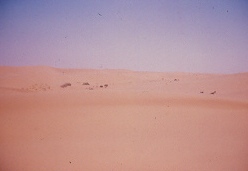News that NASA's Curiosity Rover has detected organic hydrocarbons in 3 billion year old rock from an ancient lake bed has further piqued excitement about the possibility of life on Mars(https://www.theguardian.com/science/2018/jun/07/nasa-mars-rover-finds-organic-matter-in-ancient-lake-bed). The difficulty is that the rocks have to be subjected to great heat before the tell-tale information can be transmitted. Although hydrocarbons would support (bacterial-style?) life there is currently no real evidence on how they got there. They could have been formed, as presumed on Earth, by electrical discharges triggering chemical interactions between water and atmospheric gases (items that are now much rarer on the planet) or they could have arrived via collisions with comets or large meteorites. It is, however, an intriguing addition to our available information.
This blog may help people explore some of the 'hidden' issues involved in certain media treatments of environmental and scientific issues. Using personal digital images, it's also intended to emphasise seasonal (and other) changes in natural history of the Swansea (South Wales) area. The material should help participants in field-based modules and people generally interested in the natural world. The views are wholly those of the author.
Subscribe to:
Post Comments (Atom)
-
I n the UK and US, a pparently popular and successful vegan/vegetarian restaurants are reportedly closing or adding meat to their menus ( ...
-
Early ripening fruit may seem convenient but some folk think it confirms environmental stress. There's also a possibility th...


%20mating%20NWCW.jpg)


No comments:
Post a Comment